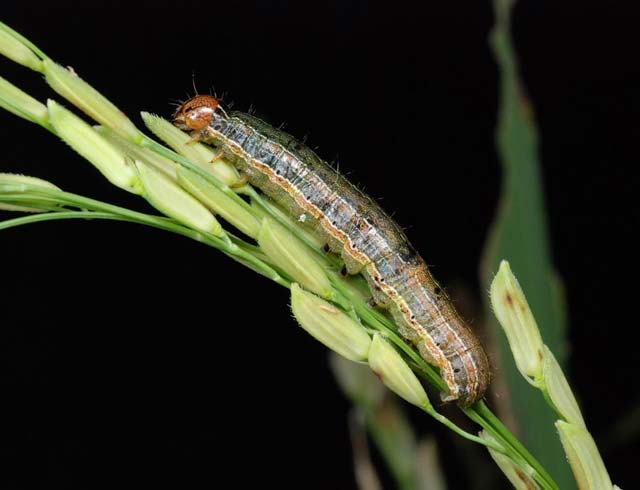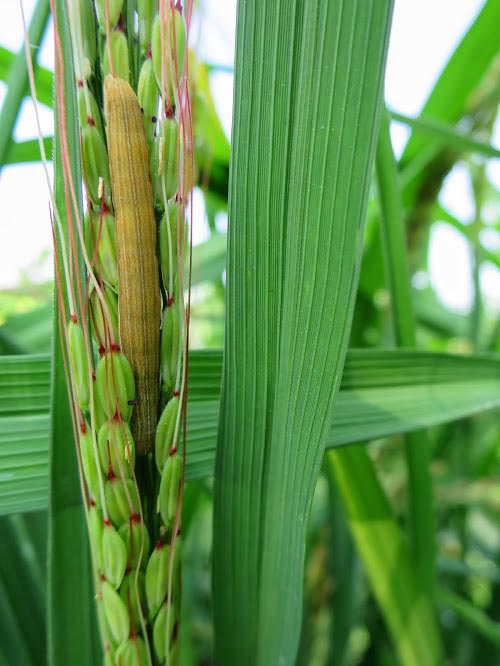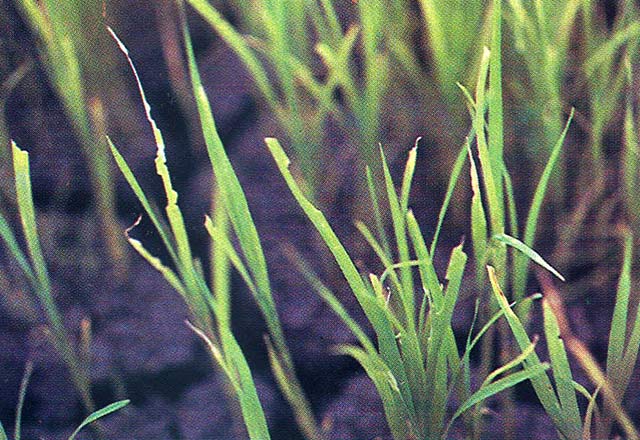Armyworm
Armyworms are caterpillars that attack rice. There are at least three species of armyworm which attack rice in Asia. These are the rice swarming caterpillar , common cutworm , and the rice ear-cutting caterpillar.
A single armyworm egg mass contains hundreds of eggs. Each female lays 800−1000 eggs during its lifetime of about one week.
What it does?
 Armyworm feeds on rice by cutting off leaves and young seedlings at the plant's base. They can also cut off rice panicles from base.
Armyworm feeds on rice by cutting off leaves and young seedlings at the plant's base. They can also cut off rice panicles from base.
Why and where it occurs
Adult armyworms survive better and produce more eggs when the temperature is at 15°C maximum, and when plants are naturally fertilized. Periods of drought followed by heavy rains, and the presence of alternate hosts also sustain the development of armyworms.
Armyworms are nocturnal.
The larvae usually feed in the upper portion of the rice canopy on cloudy days or at night; while the adult feeds, mates, and migrates at night and rests in daytime at the base of the plant.
In dryland fields, armyworm pupa can be found in the soil or at the base of the rice plants. In wetlands, they pupate on the plants or on grassy areas along the field borders.
How to identify
Check for feeding damage.
Armyworms feed on leaf tips and along leaf margins. When they eat whole leaves, they can remove them completely or leave only the midribs.
Armyworm damage can be mistaken for cutworm feeding. The characteristic form of armyworm damage is leaf removal. To confirm, check for the presence of the insect and its egg mass.
Why is it important
The rice armyworm can be a problem at all stages of the rice crop.
Yield losses can occur when the population is high. It becomes very destructive that it can totally damage the host plant.
During an outbreak, armyworms become highly abundant and can move in large groups from field to field to feed and attack the crops.
How to manage
Flooding seedbeds is the best defense against armyworms.
To prevent armyworm infestation:
- Establish seedbeds far from large areas of weeds.
- Plow fallow land.
- Clean the field and remove weeds.
To control:
- Place ashes in the trenches to make it more difficult for the caterpillars to escape.
- Place branches around fields to give armyworms a place to congregate where they are easily collected by hand.
- Avoid killing natural enemies of armyworms such as wasps and spiders.
Insecticides should be the last resort for armyworm control.

